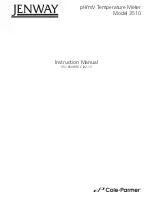
Optical safety
For a detailed description about Optical safety guidelines, refer the Metropolis
®
AMU
Safety Guide.
IEC Customer Laser Safety Guidelines
Lucent Technologies declares that this product is compliant with all essential safety
requirements as stated in IEC 60825-Part 1 and 2 “Safety of Laser Products” and
“Safety of Optical Fibre Telecommunication Systems”. Futhermore, Lucent
Technologies declares that the warning statements on equipment labels are in
accordance with the specified laser radiation class.
Optical Safety Declaration (if laser modules used)
Lucent Technologies declares that this product is compliant with all essential safety
requirements as stated in IEC 60825-Part 1 and 2 “Safety of Laser Products” and
“Safety of Optical Fiber Telecommunication Systems”. Furthermore, Lucent
Technologies declares that the warning statements on equipment labels are in
accordance with the specified laser radiation class.
Optical Fiber Communications
This equipment contains an Optical Fiber Communications semiconductor laser/LED
transmitter. The following Laser Safety Guidelines are provided for this product.
General Laser Information
Optical fiber telecommunication systems, their associated test sets, and similar
operating systems use semiconductor laser transmitters that emit infrared (IR) light at
wavelengths between approximately 800 nanometers (nm) and 1600 nm. The emitted
light is above the red end of the visible spectrum, which is normally not visible to the
human eye. Although the radiant end at near-IR wavelengths is officially designated
invisible, some people can see the shorter wavelength energy even at power levels that
are several orders of magnitude below any levels that have been shown to cause injury
to the eye.
Conventional lasers can produce an intense beam of monochromatic light. The term
“monochromaticity” means a single wavelength output of pure color that may be
visible or invisible to the eye. A conventional laser produces a small-size beam of
light, and because the beam size is small the power density (also called irradiance) is
very high. Consequently, lasers and laser products are subject to federal and applicable
state regulations, as well as international standards, for their safe operation.
A conventional laser beam expands very little over distance, or is said to be very well
collimated. Thus, conventional laser irradiance remains relatively constant over
distance. However, lasers used in lightwave systems have a large beam divergence,
typically 10 to 20 degrees. Here, irradiance obeys the inverse square law (doubling the
distance reduces the irradiance by a factor of 4) and rapidly decreases over distance.
Lasers and Eye Damage
The optical energy emitted by laser and high-radiance LEDs in the 400-1400 nm range
may cause eye damage if absorbed by the retina. When a beam of light enters the eye,
About this information product
...................................................................................................................................................................................................................................
xviii
Lucent Technologies - Proprietary
See notice on first page
365-312-847R4.0
Issue 4, November 2006
,
















































